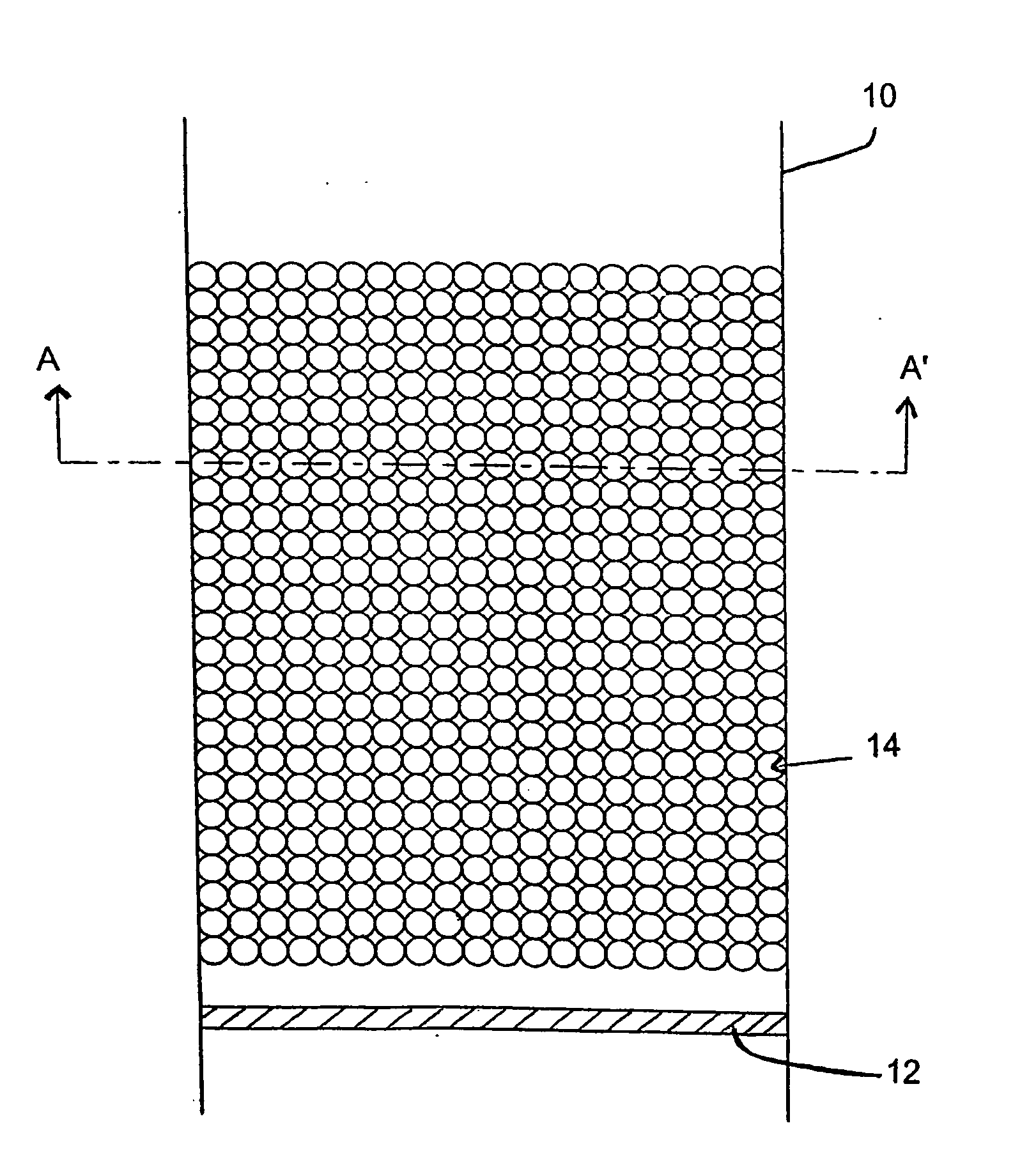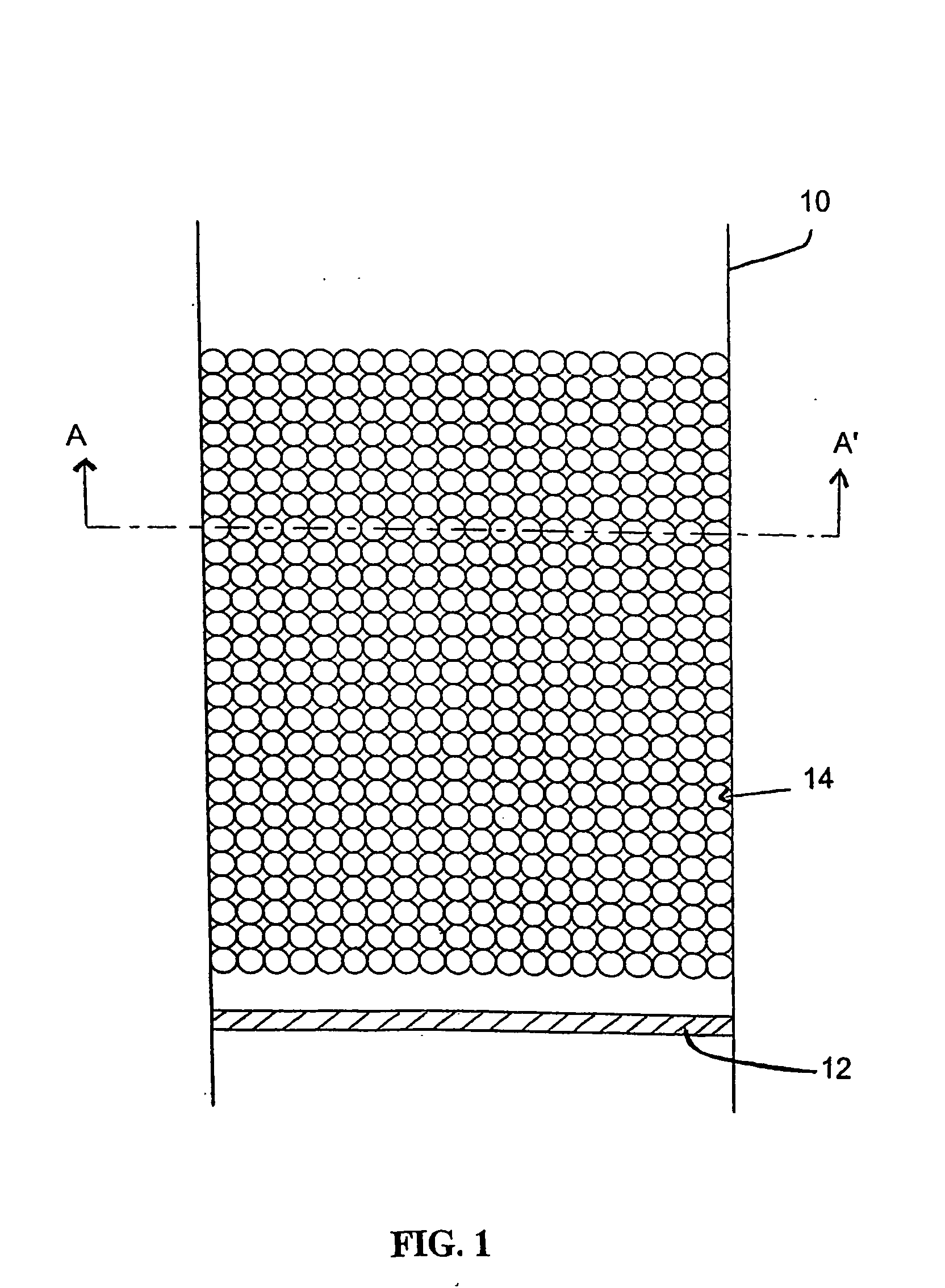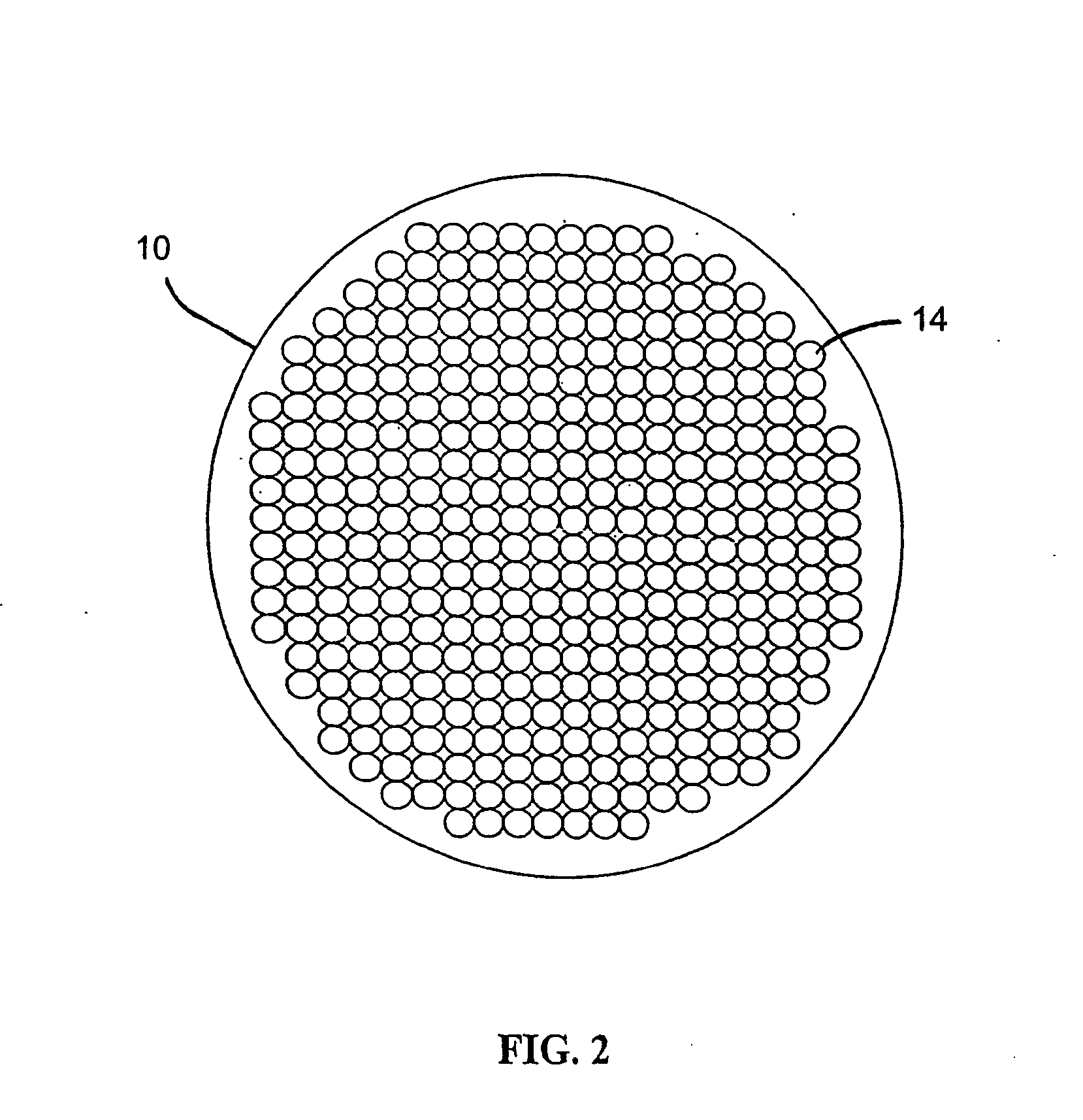Method for forming matrices of hardened material
a technology of hardenable liquid and matrices, which is applied in the field of production of hardened materials, can solve the problems of delicate matrices formed according to this invention, and achieve the effect of accurately constructing such regions and affecting the hardening of hardenable liquid
- Summary
- Abstract
- Description
- Claims
- Application Information
AI Technical Summary
Benefits of technology
Problems solved by technology
Method used
Image
Examples
Embodiment Construction
[0098]FIG. 1 shows a schematic sectional view of an apparatus for producing a hardened matrix according to an embodiment of the invention. In FIG. 1, a tubular vessel 10 has a sealing plate 12 located at its lower end. Sealing plate 12 is provided to ensure that liquid in the tube 10 above sealing plate 12 does not leak out of the lower end of tube 10. Sealing plate 12 is removable. It may, for example, be a plunger, capable of sliding upwards or downwards within the tube 10 (which may be a converted syringe).
[0099] An array of discrete beads 14 is packed within tube 10. The array of beads is an example of a volume blanking structure. It is to be noted here that the schematic packing arrangement as shown in FIG. 1 is very regular. In practical embodiments of the invention, it is likely that the packing of beads 14 will be more or less random. This is because beads 14 are typically small, for example around 50 μm in diameter. Beads 14 may be packed in tube 10 simply by pouring the b...
PUM
| Property | Measurement | Unit |
|---|---|---|
| size | aaaaa | aaaaa |
| temperature | aaaaa | aaaaa |
| temperature | aaaaa | aaaaa |
Abstract
Description
Claims
Application Information
 Login to View More
Login to View More - R&D
- Intellectual Property
- Life Sciences
- Materials
- Tech Scout
- Unparalleled Data Quality
- Higher Quality Content
- 60% Fewer Hallucinations
Browse by: Latest US Patents, China's latest patents, Technical Efficacy Thesaurus, Application Domain, Technology Topic, Popular Technical Reports.
© 2025 PatSnap. All rights reserved.Legal|Privacy policy|Modern Slavery Act Transparency Statement|Sitemap|About US| Contact US: help@patsnap.com



